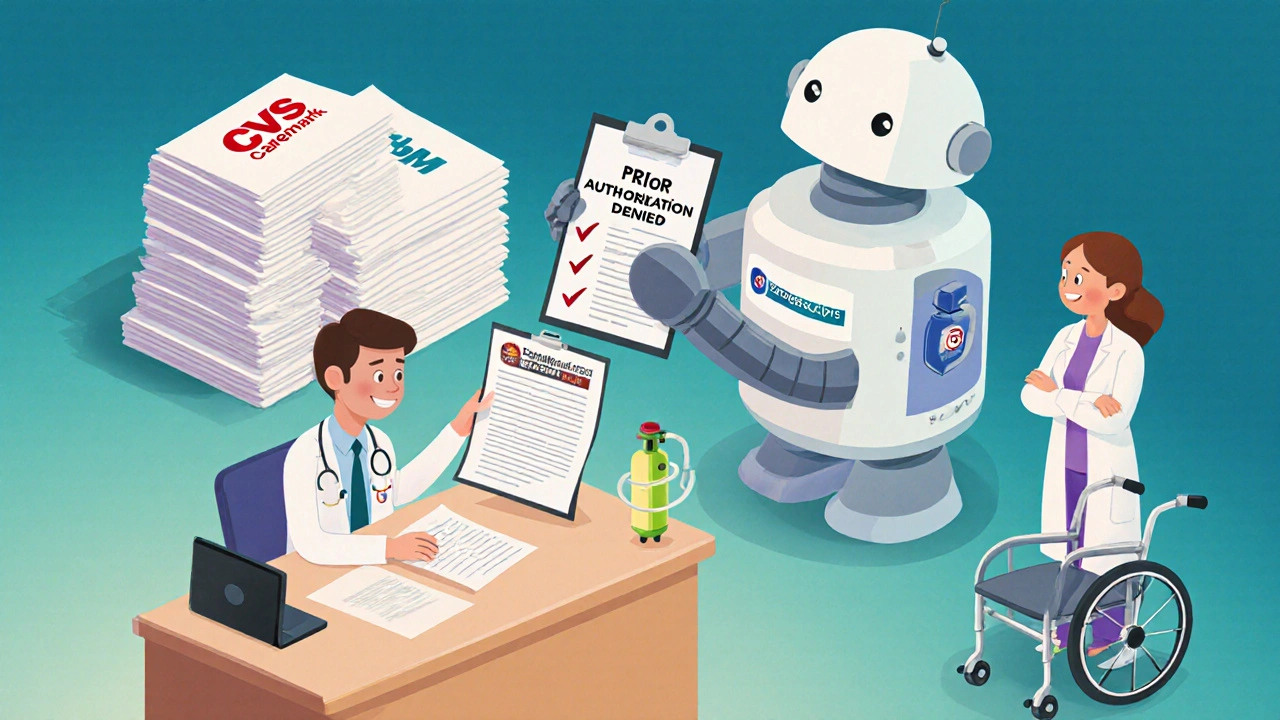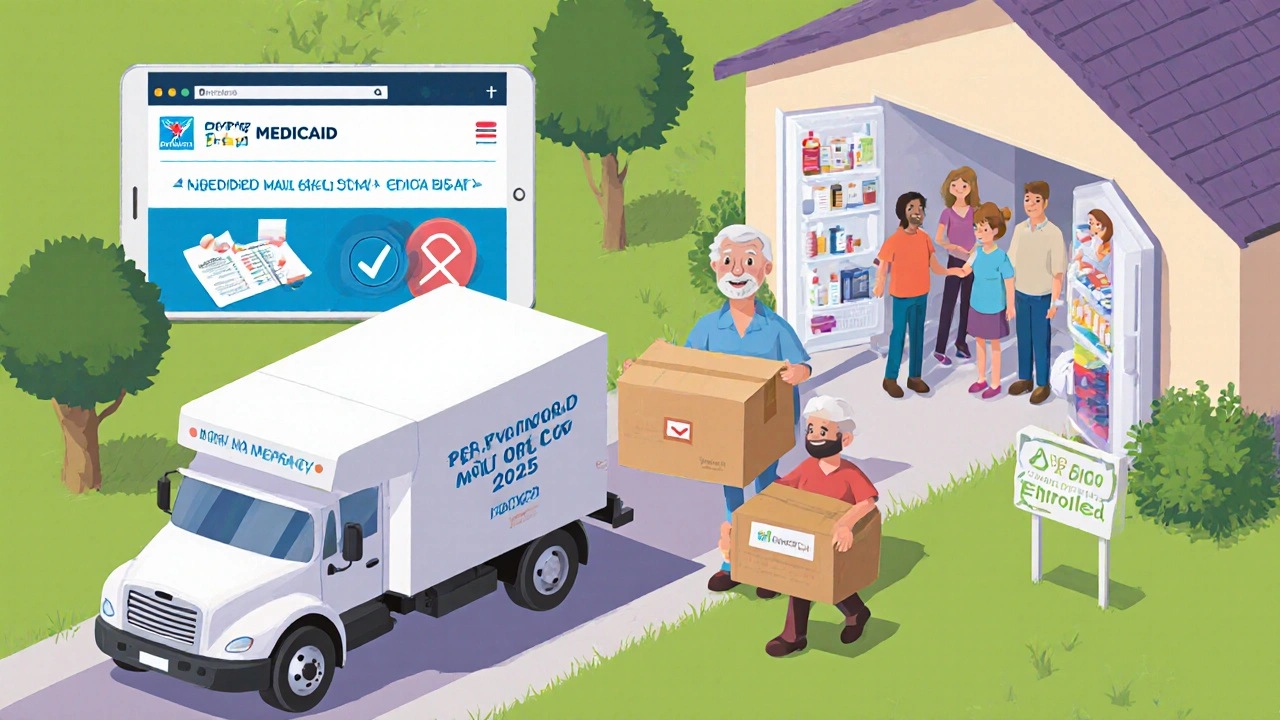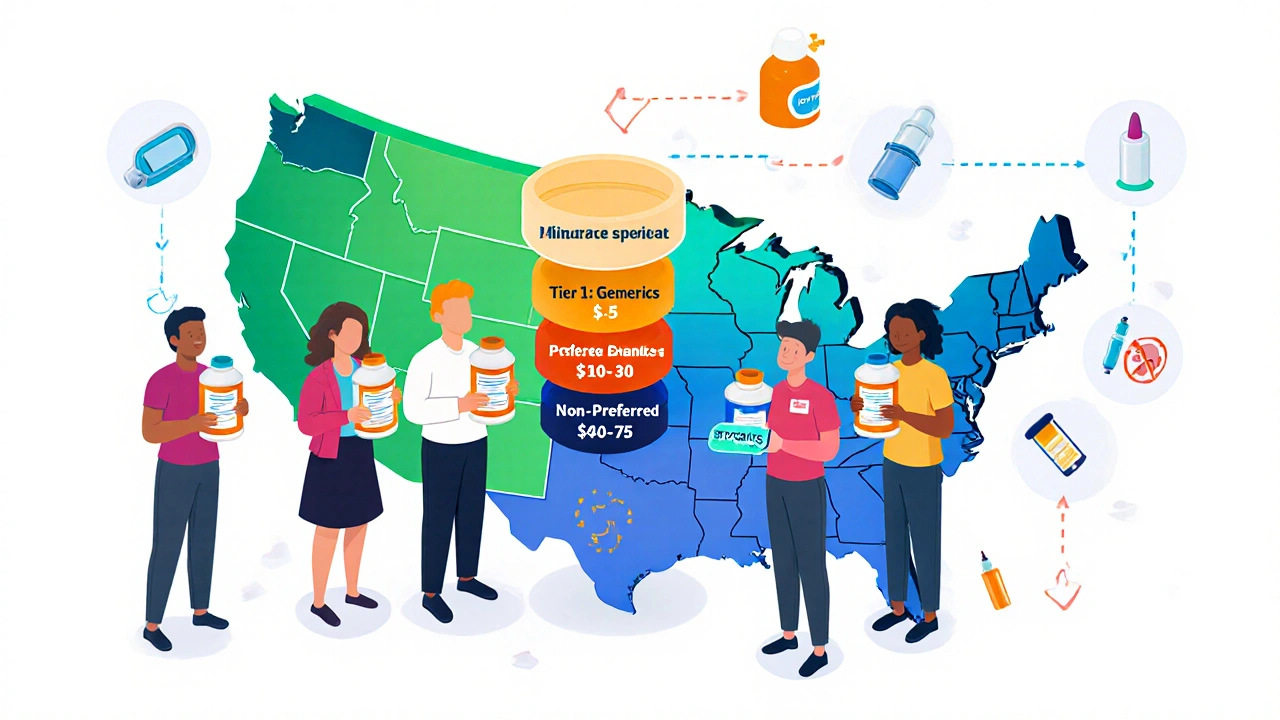When you’re on Medicaid, getting your prescriptions shouldn’t feel like a maze. But for millions of Americans, navigating what’s covered - and what isn’t - can be confusing, frustrating, and even dangerous if you delay needed meds. In 2025, Medicaid prescription coverage is available in every state, but what you get depends heavily on where you live, what drug you need, and whether it’s generic or brand-name. This isn’t just about paperwork. It’s about access to life-sustaining medications for people with diabetes, mental illness, HIV, arthritis, and other chronic conditions.
Every State Covers Prescriptions - But Not the Same Way
Federal law doesn’t require states to cover outpatient prescription drugs under Medicaid. Yet, every single state does. Why? Because without drug coverage, people skip doses, end up in the ER, or get sicker - and that costs more in the long run. The real story isn’t whether drugs are covered. It’s how they’re covered. Each state builds its own Preferred Drug List (PDL), a ranked list of medications that Medicaid will pay for with the lowest out-of-pocket cost. These lists are updated multiple times a year. In North Carolina, for example, the PDL changed in July and October 2025, removing drugs like Vasotec and Trulance because they no longer qualified for federal rebates. That doesn’t mean they’re unsafe. It means the state stopped negotiating a good enough price.Tiered Formularies: How Much You Pay Depends on the Tier
Most states use a tier system to control costs. Think of it like a pricing ladder:- Tier 1: Generics - These are the cheapest. Most states charge $1-$5 per prescription. In 2025, if you qualify for Extra Help (a federal program for low-income Medicare beneficiaries), your copay is $0 for generics.
- Tier 2: Preferred Brand-Name Drugs - These are brand-name drugs the state has negotiated a better deal on. Copays range from $10-$30.
- Tier 3: Non-Preferred Brands - These are expensive drugs not on the preferred list. You might pay $40-$75. But here’s the catch: you usually need prior authorization just to get them.
- Tier 4: Specialty Drugs - These are high-cost medications for conditions like cancer, MS, or hepatitis C. They can cost hundreds or thousands. Medicaid covers them, but only after jumping through major hoops.
Here’s the twist: 89% of all Medicaid prescriptions are for generics - but they only make up 27% of total spending. Meanwhile, just 3% of prescriptions are for specialty drugs - but they account for 42% of the entire drug budget. That’s why states are so strict about controlling access to those expensive ones.
Step Therapy: You Have to Fail First
One of the most controversial rules is called “step therapy” or “trial and failure.” If your doctor prescribes a brand-name drug, but Medicaid has a cheaper generic or preferred brand in the same class, you must try and fail on at least two of those first. In North Carolina, Florida, and 36 other states, you’re required to try two preferred drugs before Medicaid will pay for the one your doctor actually wants. For someone with depression, that might mean trying two SSRIs before getting Wellbutrin XL - even if those first two caused bad side effects. A 2024 survey by the Medicare Rights Center found that 63% of Medicaid beneficiaries experienced delays because of this rule. Some waited over two weeks just to get approval. There are exceptions. If a drug is the only one in its class (like a rare epilepsy medication), or if you’ve already tried the alternatives in the past, you can skip this step. But you need your doctor to submit detailed medical records proving it.
Prior Authorization: The Paperwork Trap
Even if a drug is on the formulary, you might still need prior authorization. This means your doctor has to call or submit forms to the state’s pharmacy benefit manager (PBM) - companies like CVS Caremark or Express Scripts - explaining why you need this specific drug. The form usually asks for:- Diagnosis code
- Why other drugs didn’t work
- Lab results or test history
- Proof of allergies or side effects
Without this, your prescription gets denied. And if you’re not prepared, you might wait days - or weeks - before getting your meds. But here’s the good news: 78% of denials are overturned on appeal if you have complete documentation from your doctor. That’s why keeping copies of medical records matters.
What’s Not Covered? The Big Gaps
Medicaid doesn’t cover everything. Some common exclusions:- Drugs not approved by the FDA
- Weight-loss medications (like Ozempic or Wegovy) - most states don’t cover these for obesity unless it’s tied to a related condition like diabetes
- Over-the-counter (OTC) drugs - even aspirin or allergy pills - unless specifically approved for certain conditions
- Drugs for cosmetic purposes
- Some fertility treatments
In 2025, North Carolina removed several drugs from its formulary because they no longer qualified for federal rebates. That includes Diastat (for seizures), Relistor (for opioid-induced constipation), and Uceris (for ulcerative colitis). These aren’t bad drugs. They’re just too expensive for the state’s rebate deal.
How to Save Money: Extra Help and Mail-Order
If you’re on Medicaid, you likely qualify for Extra Help - a federal program that cuts your drug costs even further. If you get full Medicaid coverage, you’re automatically eligible. But many people don’t know this. With Extra Help in 2025:- $0 monthly premium
- $0 deductible
- Max $4.90 copay for generics
- Max $12.15 for brand-name drugs
- After spending $2,000 on drugs in a year, you pay $0 for everything else
That’s a game-changer. In fact, 89% of people who get Extra Help say they can afford their meds - compared to just 42% who don’t. The problem? About 1.2 million eligible people aren’t enrolled because they don’t know they qualify.
Another tip: Use mail-order pharmacies. Many states require you to get maintenance medications (like blood pressure or diabetes pills) through mail order to get the best price. You can get a 90-day supply shipped to your door for less than a 30-day fill at a local pharmacy.
State Differences Matter - A Lot
Don’t assume your coverage in North Carolina is the same as in Florida or Texas. Each state negotiates its own deals with drugmakers and PBMs. For example:- North Carolina: Requires two-step failure for most drugs. Has strict PDL updates. Covers insulin for Type 1 diabetes with prior auth valid for up to 3 years.
- Florida: Has a separate list for physician-administered drugs (like injections given in a clinic).
- New York: Covers more OTC drugs and has fewer step therapy requirements.
- Texas: Has tighter restrictions on psychiatric medications.
There are 50 different Medicaid drug plans. That’s why calling your state’s Medicaid office or visiting their website is essential. Don’t rely on what you heard from a friend in another state.
What’s Changing in 2025-2026?
New rules are coming. In September 2025, CMS announced it will require states to prove their formularies don’t create “unreasonable barriers” to care. That means if too many people are being denied life-saving drugs, the federal government can step in. Also, the Inflation Reduction Act’s $2,000 annual cap on out-of-pocket drug costs now applies to Medicare Part D - and it helps dual-eligible patients (those on both Medicare and Medicaid). If you’re on both, you’re protected from sky-high bills. Meanwhile, drugmakers are preparing to launch 12-15 new gene therapies by 2027 - each costing over $2 million. States are already scrambling. Twenty-two states are testing new payment models where they only pay if the drug works. It’s the future - but it’s also a huge risk for patients if approvals get delayed.What You Can Do Right Now
1. Check your state’s current formulary. Search “[Your State] Medicaid Preferred Drug List 2025.”Medicaid was never meant to be a barrier to care. But the system’s complexity makes it feel that way. The good news? You have rights. You have options. And with the right info, you can get the meds you need - without the stress.
Does Medicaid cover all prescription drugs?
No. Medicaid covers most prescription drugs, but each state creates its own list of approved medications called a Preferred Drug List (PDL). Some drugs are excluded because they don’t qualify for federal rebates, are considered non-essential, or are too expensive. Over-the-counter drugs, weight-loss medications, and cosmetic treatments are typically not covered.
Why do I have to try other drugs before Medicaid pays for mine?
This is called step therapy or trial and failure. States require you to try cheaper, preferred drugs first to control costs. If those don’t work or cause side effects, your doctor can request approval for the original medication. You’ll need documentation proving the other drugs failed. In 38 states, you must try two preferred drugs before getting a non-preferred one.
How do I know if my drug is covered?
Check your state’s Medicaid website for the current Preferred Drug List. You can also call your pharmacy or Medicaid office. Pharmacists can tell you if your drug requires prior authorization or if it’s on a restricted tier. If you’re unsure, ask your doctor’s office to verify coverage before prescribing.
Can I get my prescriptions through mail order?
Yes - and in many states, you’re required to use mail-order for maintenance medications like blood pressure or diabetes drugs. Mail-order often gives you a 90-day supply at a lower cost than a 30-day fill at a local pharmacy. Check your state’s rules to see which drugs require mail-order and how to sign up.
What is Extra Help, and do I qualify?
Extra Help is a federal program that lowers your out-of-pocket costs for prescription drugs. If you have full Medicaid coverage, you automatically qualify. Benefits include $0 premiums, $0 deductibles, and a maximum $4.90 copay for generics. Many people don’t know they’re eligible - about 1.2 million Americans miss out each year. Contact your state Medicaid office or visit Medicare.gov to confirm your enrollment.
What should I do if my prescription is denied?
Don’t give up. You have the right to appeal. Ask your doctor to submit detailed medical records explaining why the drug is necessary. Many denials - 78% - are overturned on appeal when proper documentation is provided. You can also contact your state’s Medicaid ombudsman or a patient advocacy group for help navigating the process.
Are specialty drugs covered by Medicaid?
Yes, but with heavy restrictions. Specialty drugs - like those for cancer, MS, or hepatitis C - are expensive and require prior authorization, step therapy, and sometimes proof of failure on other treatments. Some states also require you to use specific pharmacies or providers to get them. While they’re covered, the process can take weeks. New payment models are being tested where states only pay if the drug works.
How often do Medicaid drug lists change?
State Medicaid formularies change often - sometimes quarterly. North Carolina updates its list in January, July, and October each year. Other states make changes monthly or as needed. Always check for updates before filling a prescription. Pharmacies may not always know the latest changes, so verify directly with your state’s Medicaid website or pharmacy benefit manager.
